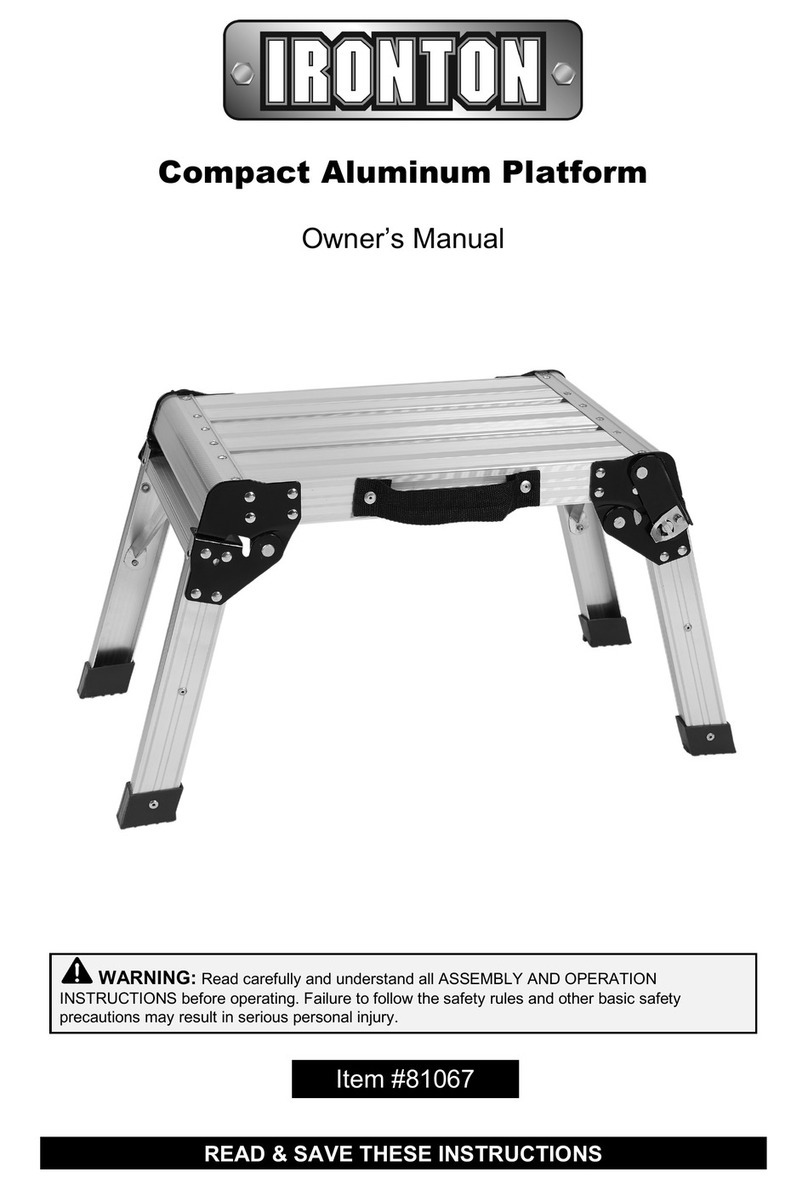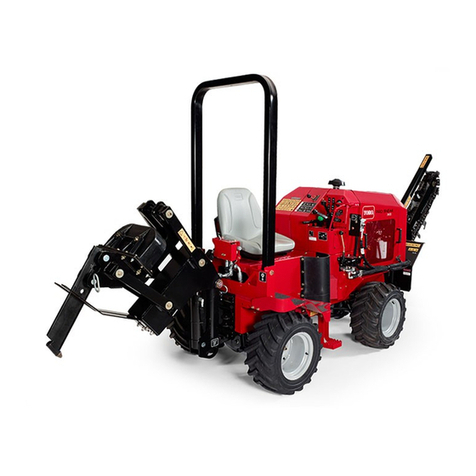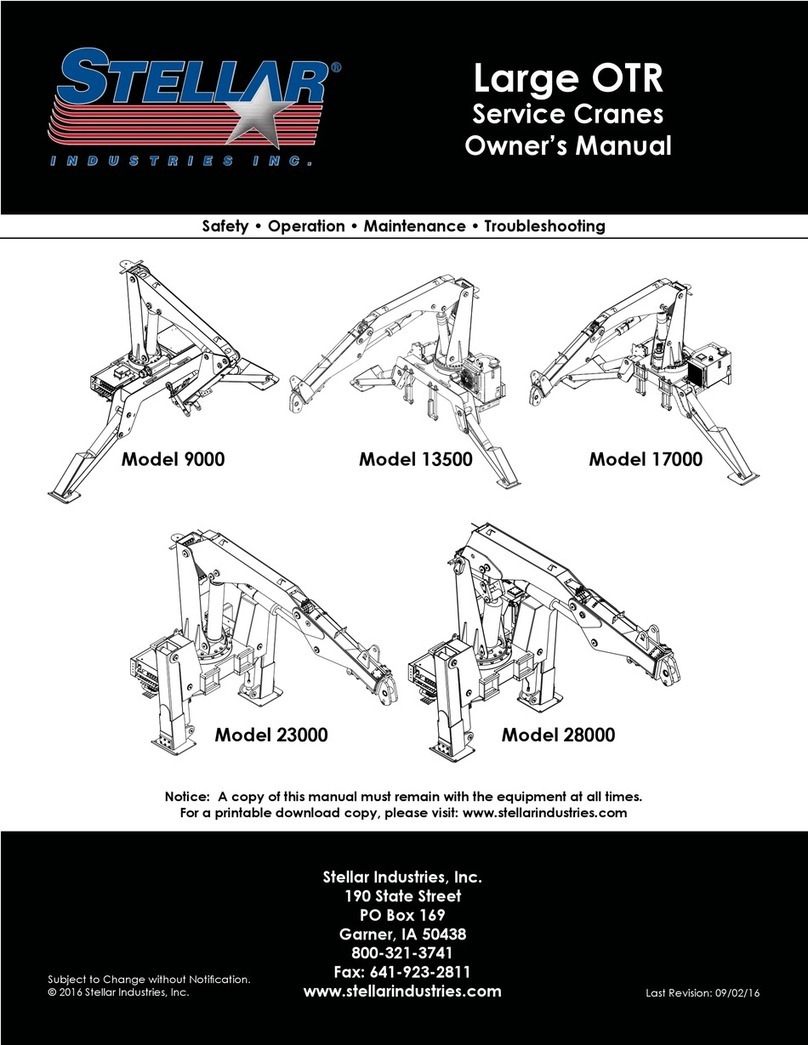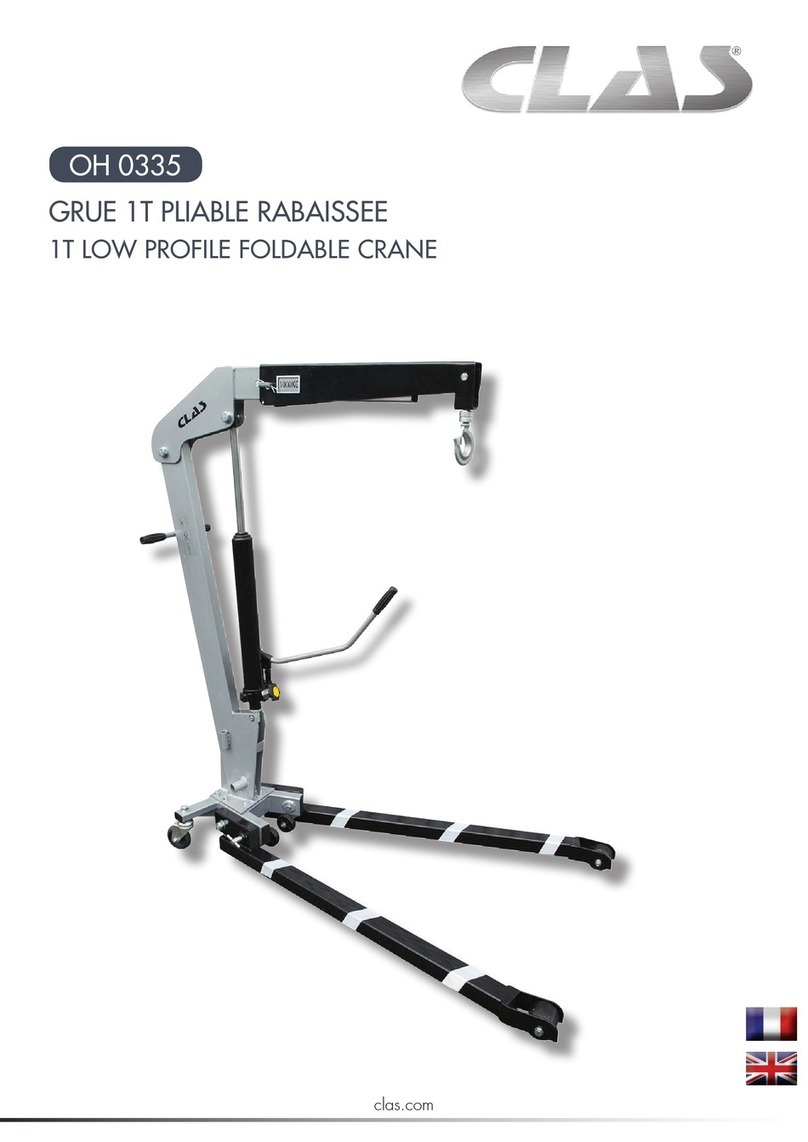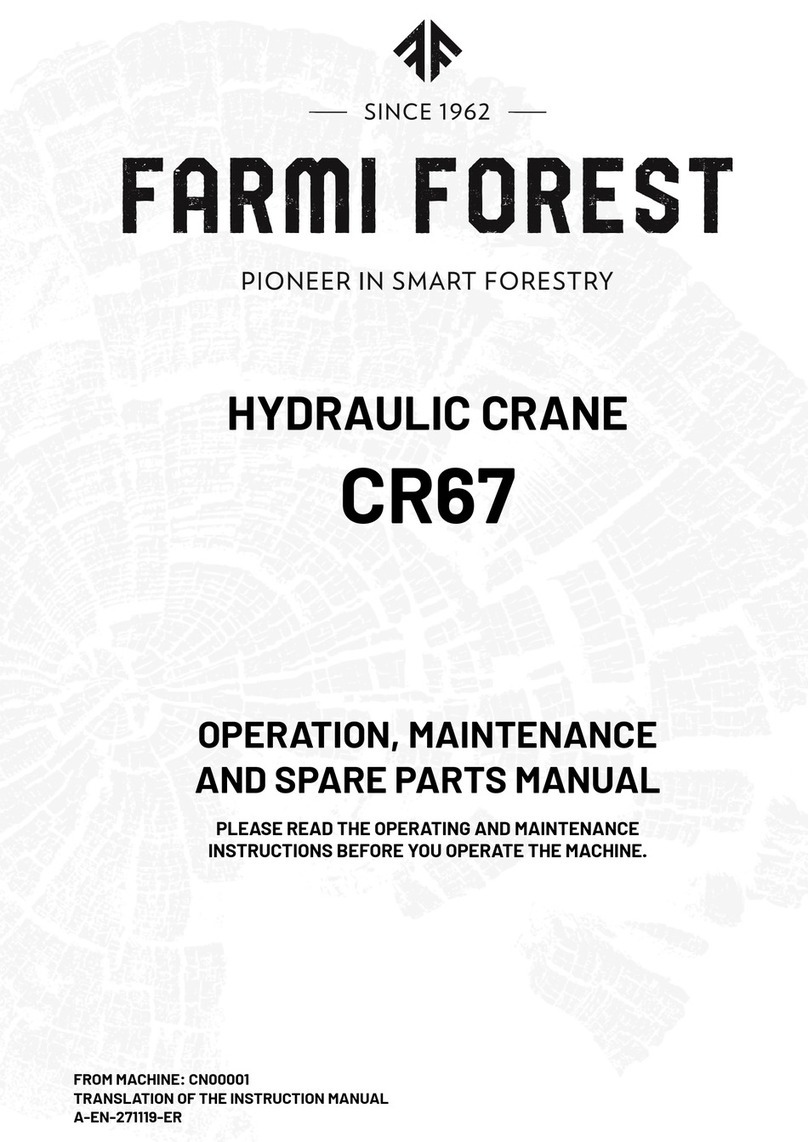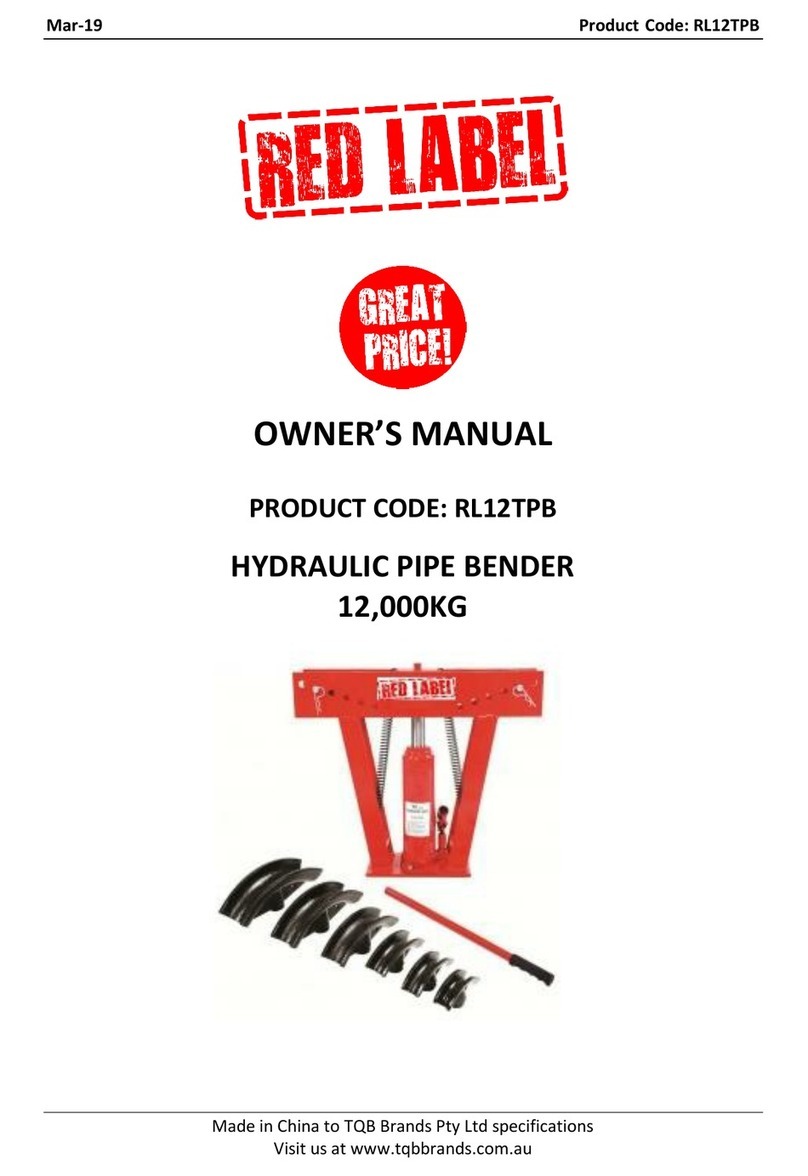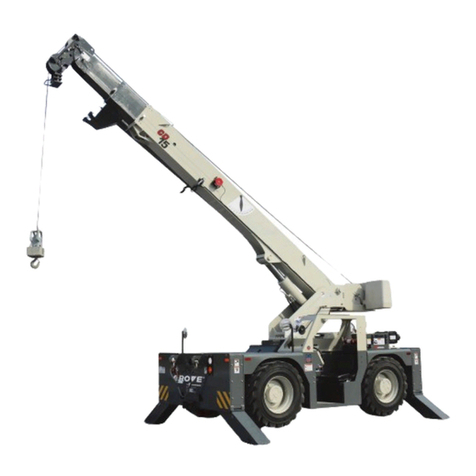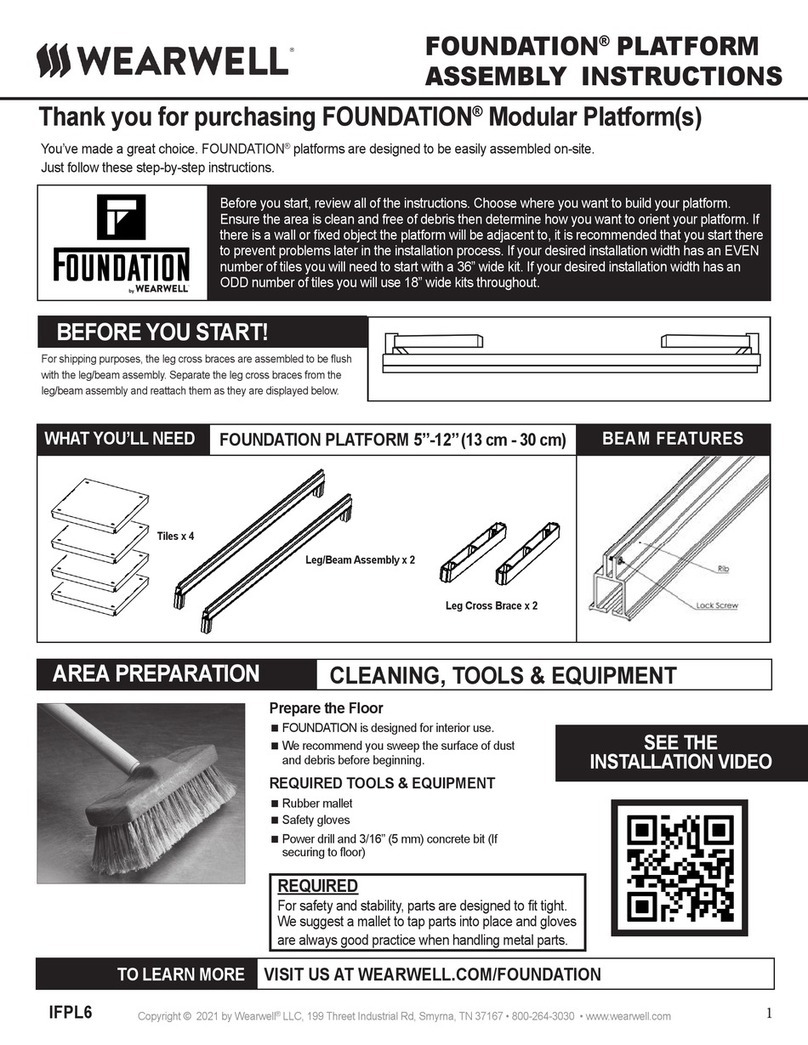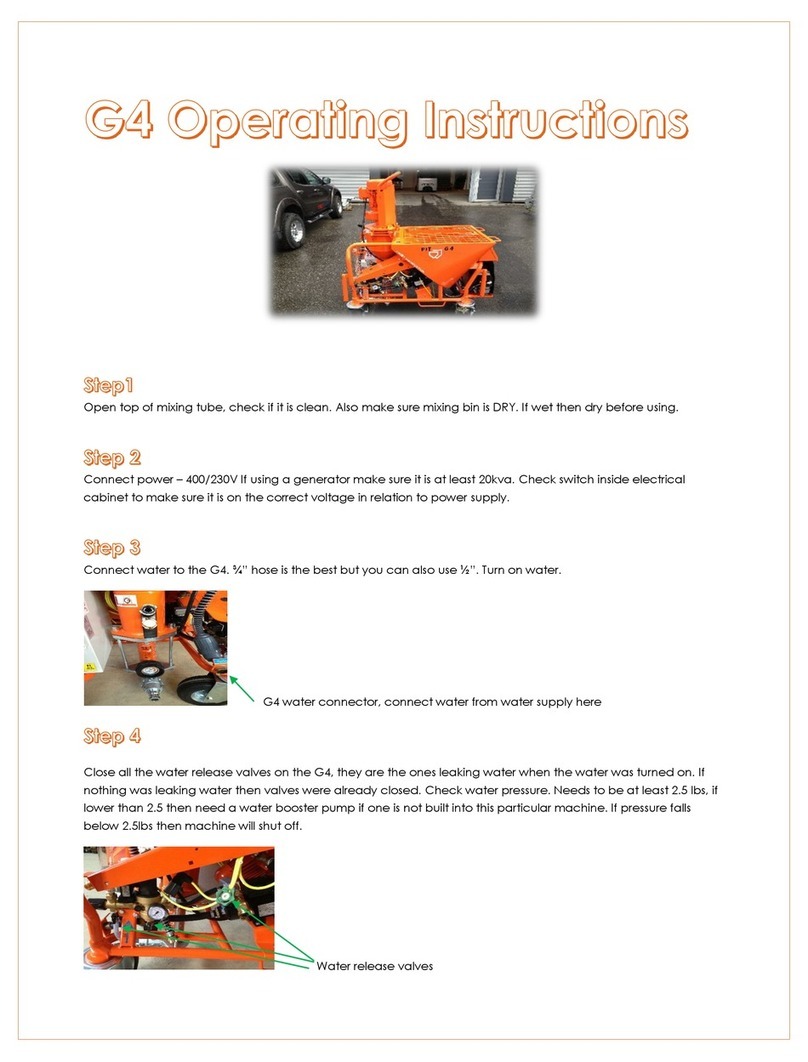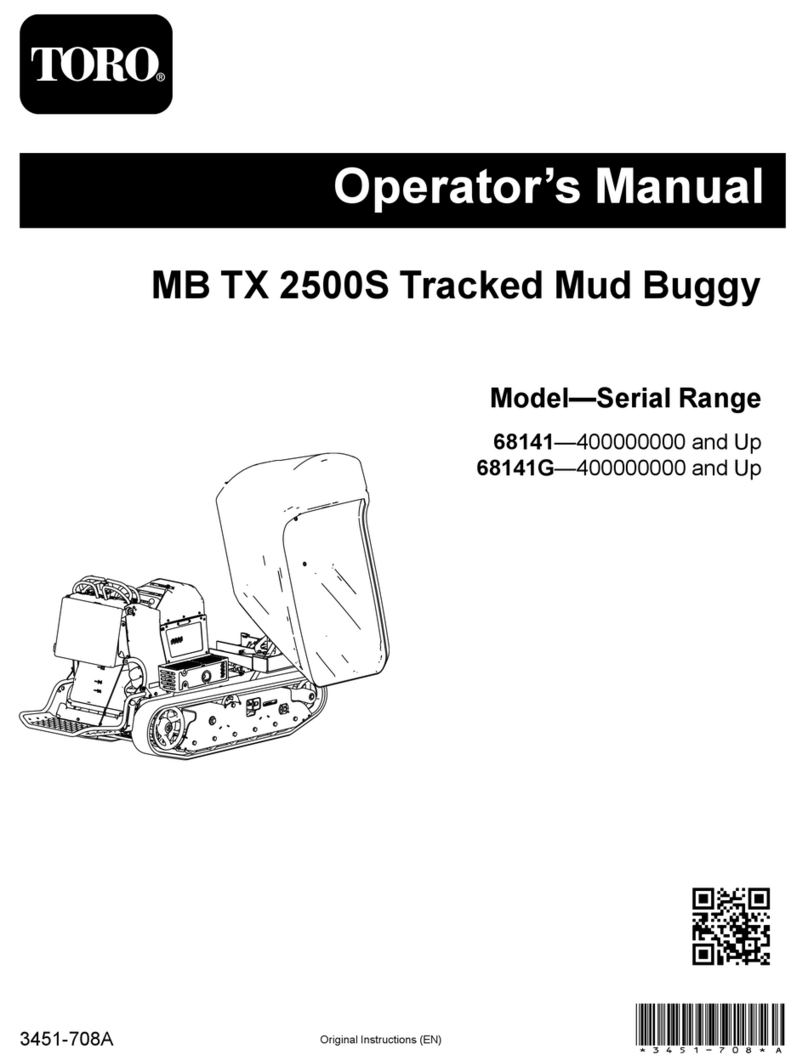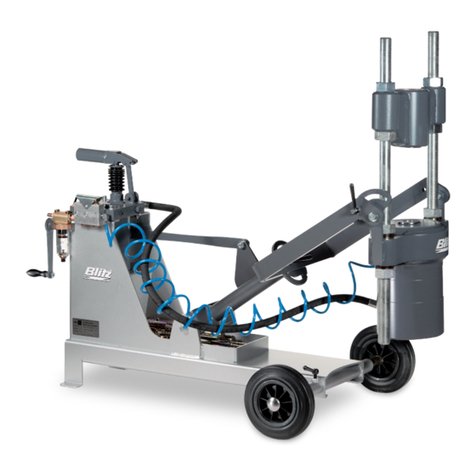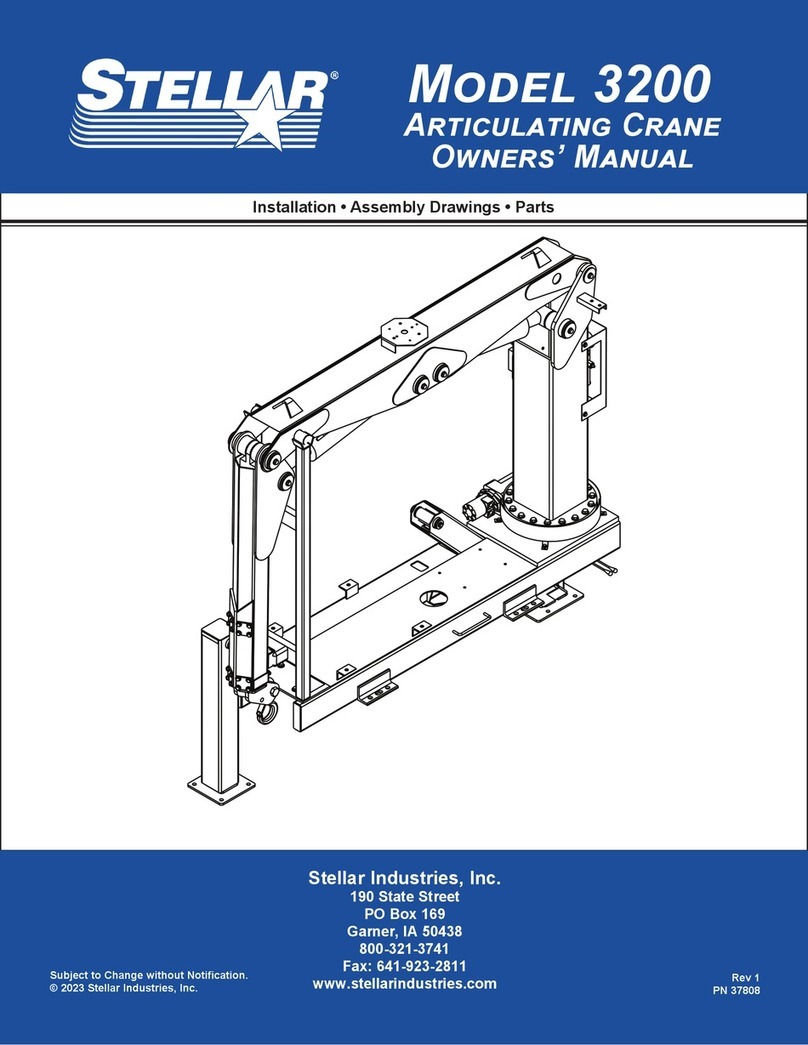Bison NB Series User manual

Models
NB80-180 • NB80-210 • NB80-240 • NB80-270
NB120-210 • NB120-240 • NB120-270 • NB120-300
REAR BLADE OPERATOR’S MANUAL
NB
NB
Part №
4350-2147-03


READ THIS MANUAL carefully to learn how to operate and service your
machine correctly. Failure to do so could result in personal injury or equipment
damage.
THIS MANUAL SHOULD BE CONSIDERED a permanent part of your
machine and should remain with the machine when you sell it.
MEASUREMENTS in this manual are given in both metric and customary
U.S. unit equivalents. Use only correct replacement parts and fasteners.
INTRODUCTION
4350-2147-03 (Rev. 11/04/16)
!!

TO OUR CUSTOMERS:
Congratulations for acquiring a Bison® product.
We are confident in your excellent decision to purchase Bison®equipment,
and are honored to have you as our valued customer.
Your dealership shall make the technical pre-delivery of your equipment,
and a trained technician shall provide you maintenance and operation
instructions contained in this manual. Get in contact with your dealership
representative if you have questions regarding your equipment or need
specialized help.
We recommend that you read this manual before operating the equipment.
Therefore, the time you take to learn about all maintenance features,
adjustments and recommendations will result in the long, efficient life of
your equipment.
This equipment is covered by a warranty duration provided by your Bison®
authorized dealer at the purchase or technical delivery of same.
Bison®is a Brand of Tecnomec Agrícola, S.A. de C.V., Aguascalientes,
México.

GENERAL INDEX
INTRODUCTION
GENERAL NFORMATION
SPECIFICATIONS
SAFETY RULES
SAFETY DECALS
OPERATION
MAINTENANCE
ASSEMBLY
DELIVERY CHECKLIST
PARTS INDEX
BOLT TORQUE CHART
WARRANTY
!!
01
06
08
17
19
27
29
43
44
61
64

OPERATOR’S MANUAL
If this manual is lost or destroyed
a new copy can be requested to:
TECNOMEC AGRICOLA S.A. DE C.V.
Carr. a Paso Blanco, Km 2 No. 400
Col. Vista Hermosa, Jesús María
Aguascalientes, México. C.P. 20905
Tel. 01 (449) 922 47 66, 922 47 60
Fax 01 (449) 922 47 67
NB rear blade series, is designed to work safely, nevertheless, take
into consideration the following:
Read this manual to understand proper handling and maintenance of your
rear blade.
Write its serial number in the warranty section to recover the machine in
case of theft. Keep this manual in a safe place. Do not keep it in the
machine.
A careful operator is the best guarantee against any accident as improper
operation of this machinery can provoke serious injuries and death.
Before operating make sure there are no individuals around the rear blades.
While transporting the rear blade, make sure that all adjustment pins are
complete and correctly installed. Verify that the blade is at least 40 cm. lifted
from the ground.
To achieve a more efficient and higher quality work is important to read and
execute instructions and set your rear blade operation as an implement well
lubricated with the proper settings saves time, labor,
and fuel.
Once finishing your work, clean and inspect your rear blade to detect
possible flaws.
GENERAL INFORMATION
01

Tecnomec Agricola offers original spare parts, thru authorized
dealers.
Our trained personnel, is well versed on methods to service to
your equipment. If you need additional information or custom
assistance please contact your Bison authorized dealership
or directly to TECNOMECAGRÍCOLA S.A. DE C.V.
YOUR AUTHORIZED DISTRIBUTOR
TECNOMEC AGRÍCOLA, S.A. DE C.V.
IT IS THE POLICY OF TECNOMEC AGRICOLA TO
CONTINUOUSLY IMPROVE ITS PRODUCTS AND
RESERVES THE RIGHT TO MAKE CHANGES TO ITS
SPECIFICATIONS OR DESIGN WITHOUT INCURRING
IN THE OBLIGATION TO APPLY THEM TO UNITS
ALREADY SOLD.
CURRENT MODELS MAY VARY IN SOME DETAILS
GIVEN CONTINUOUS IMPROVEMENT TO WHICH OUR
PRODUCTS ARE SUBMITTED.
*Some pictures show equipment that is not necessarily
included as part of the standard machine.
02
GENERAL INFORMATION

LISTS OF INSPECTION
PRE-DELIVERY INSPECTION MADE BY BISON DEALERSHIP
Once the rear blade has been adjusted completely, check and ensure that it is ready for proper
operation prior to delivery to the customer. The following checklist is a reminder of checkpoints.
Verify that each point is satisfactory and recheck once a proper adjustment has been made.
■ Check the rear blade is properly assembled.
■Checks that bolts, nuts and screws are tighten.
■Check that all grease fittings are lubricated.
■Check that all hydraulic cylinders had been properly adjusted.
■Clean the rear bladend retouch where the paint is peeled or scratched.
■Ensure all labels and protective covers to be properly fixed and without any damage.
■Safely attach the disc harrow to the tractor hitch and ensure that there are no leaks on
hydraulic system.
■Check that hydraulic components are operating properly. Ensure the machine has all
features required by client.
Date of Assembly___________Name and Signature of Technician_______________
03

DELIVERY BY BISON DEALERSHIP
The following list is an important information remainder to be transmitted directly to the
customer at the moment of the delivery of the Rear Blade.
Check each point once it was duly explained to the client.
■Point out to the customer that useful life of this or any other machine is dependant of
proper lubrication as described on its operator's Manual.
■Hand your customer the operator's Manual and fully explain all operations, lubrication
and maintenance adjustments.
■Explain the importance of a proper and safe operation of the machine. Stress the
importance of labels as those prevent the operator from hazards due to unsafe operation
procedures and conditions.
■Notify the client of accessories or options available.
■When the rear blade is transported on roads or highways during the day or night, you
should use lights or safety devices to alert drivers of other vehicles. Advise the customer
abouth the official rules of the local town traffic. We recommend using slow-moving vehicle
emblem (SMV).
■Show the customer how to mount the implement.
■Explain to the customer the serial number registration of rear blade in the space
provided at the end of this operator’s manual.
■Fill out the forms of delivery and warranty, listing the serial number of the implement.
Explain the warranty, and perform a release form where the client and the distributor agree
upon.
■The machine is delivered and ready to use, the customer has been informed all about
the operation and care of it.
Date of Delivery___________Name and Signature____________________
OWNER REGISTRATION
Name
City
State
Serial number
Model number
Purchase date
LISTS OF INSPECTION
04

LISTS OF INSPECTION
POST-SALES INSPECTION
It’s advised that the following items are constantly checked during first hours of operation.
■Fully check the machinery and certify there are no damaged parts. Repair or change if
necessary. AII guards shall be in place.
■Check there are no loose or missing screws.
■If possible, operate the rear blade to verify its proper operation.
■Check the operator's manual in full with your client and highlight importance of a regular and
proper lubrication as well as safety precautions.
Inspection Date____________ Name and Signature___________________________
MORNING OPERATION INSPECTION
Lube all points in need of daily lubrication and those that require lubrication at a recommended
time.
■Ensure all screws are complete and parts tighten.
■Check that mounting components are safe.
■Ensure that all hydraulic connections are properly tightened.
SEASONAL INSPECTION
■Check general state of rear blade (normal wear and tear, no bumps, no leaks in hoses, etc.)
■Ensure that proper lubrication has been made.
■With rear blade in operation, check operation of moving parts.
■Check any failure signal of operation and check there is no unusual vibration or noise.
05

06
* Tecnomec Agricola, S.A. de C.V. reserves the right to make any changes deemed necessary to the specifications
without prior notice.
* Some pictures may include options that are not a part of the standard equipment.
SPECIFICATIONS
SPECIFICATIONS NB80-180 NB80-210 NB80-240 NB80-270
Length of Blade
Approximate Weight (Manual/Hydraulic)
King Pin Diameter
Height and Thickness of Moldboard
Blade dimensions
Maximum HP
Hitch type
Swing angle
Offset adjustment
Tilt angle
Total rotation
Stand
6
780/880
65
7
815/915
70
8
850/950
75
9
880/980
80
3 1/4
19 1/4
1/2" x 6"
reversible blade
3-pt CAT II / Quick attach CAT II1
10 positions up to 50°, left or right (manual).
Adjusts up to 45°, left or right (hydraulic)2.
4 positions up to 30", left or right (manual).
Adjusts up to 24", left or right (hydraulic)2.
3 positions up to 21°, up or down (manual).
Adjusts up to 21°, up or down (hydraulic)2.
360
Standard
ft
lbs
in
in
hp
°
in
°
°
ESPECIFICACIONES NB120-210 NB120-240 NB120-270 NB120-300
Length of Blade
Approximate Weight (Manual/Hydraulic)
King Pin Diameter
Height and Thickness of Moldboard
Blade dimensions
Maximum HP
Hitch type
Swing angle
Offset adjustment
Tilt angle
Total rotation
Stand
7
970/1070
90
8
1025/1125
100
9
1080/1180
110
10
1125/1235
120
3 1/4
19 1/4
1/2" x 6"
reversible blade
3-pt CAT II / Quick attach CAT II1
10 positions up to 50°, left or right (manual).
Adjusts up to 45°, left or right (hydraulic)2.
4 positions up to 30", left or right (manual).
Adjusts up to 24", left or right (hydraulic)2.
3 positions up to 21°, up or down (manual).
Adjusts up to 21°, up or down (hydraulic)2.
360
Standard
ft
lbs
in
in
hp
°
in
°
°

07
SPECIFICATIONS
REAR BLADE COMPONENTS
This equipment is designed to help you be more
competitive, performing tasks which involve the
leveling of agricultural land.
GENERAL USES
A) Leveling of agricultural land.
B) Ditching.
C) Road dredging.
D) Make bunkers.
E) Adjustments in canal slopes.
F) Rural roads maintenance.
G) Pens and barnyard cleaning.
ADVANTAGES
A) This equipment can be mounted farm tractor’s
third point hitch of 65-80 hp on NB80 and 90-120 on
NB120.
B) High-strength bolt.
C) Imported hydraulic cylinders.
D) Offset, tilt and angle adjustments can
be controlled manually or hydraulically.
E) The offset, tilt, and angle adjustments can be
performed in both directions without changing the
side of the cylinders like other models.
F) Cat. II quick couplers to the tractor.
G) Operation via fast connections, the tractor
hydraulic system is used to operate the equipment
(hydraulic configuration).
H) The hydraulic version can be ordered with a flow
switch valve, which allows to operate 2 different
cylinders with one valve box in the tractor.
I) Optional skid support kit is available, which
increases the life of the blade and prevents damage
to the work surface for cleaning pens and roads.
J) Optional lateral plates kit is available allows the
movement of materials more easily.
NB80-001
LOWER HITCH
PIN
STAND
ANGLE
CYLINDER
TILT
CYLINDER
SUPPORT
FRAME
TOP HITCH PIN
OFFSET CYLINDER
MAINFRAME
KING PIN
TURNTABLE
MOLDBOARD PIN
MOLDBOARD
CYLINDER PIN

SAFETY RULES
This is the safety-alert symbol which means ATTEN-
TION! BE ALERT! YOUR SAFETY IS INVOLVED!
This safety alert symbol indicates important safety
messages in this manual. When you see this
symbol, carefully read the message below and be
alert to the possibility of personal injury or death.
DISTINGUISH SAFETY MESSAGES
Whenever you see the words and symbols shown
ahead and used in this manual, you MUST consider
the instructions as they are related to personal
safety.
DANGER: Indicates an imminently hazardous
situation which, if not avoided, will result in DEATH
or SERIOUS INJURY.
WARNING: Indicates a potentially dangerous
situation, if not avoided, could result in DEATH or
SERIOUS INJURY.
CAUTION: Indicates a potentially hazardous
situation which, if not avoided, could result in
MINOR INJURIES.
OBSERVE THE SAFETY MESSAGES
Before operating this equipment carefully read all
safety messages in this manual and on your
machine safety signs.
It is YOUR responsibility to read and comprehend
the safety section on this manual. Remember that
YOU are key in following safety messages. Good
safety practices not only protect you, but those who
are nearby. Study all aspects of this manual and
make them part of your safety program. Note that
this section of security is only created for this type of
equipment. Put into practice other procedures and
above all usual precautions, REMEMBER THAT
SAFETY IS YOUR RESPONSIBILITY. YOU CAN
AVOID SERIOUS INJURY OR DEATH. This security
section is meant to highlight some of the basic safety
situations that may occur during normal operation
and maintenance of this equipment, suggesting
possible ways to handle these situations. This
section does NOT replace the safety procedures that
appear in other sections of this manual.
NOTE: This handbook covers general security
practices for this equipment.
SAFETY RULES
DANGER
WARNING
CAUTION
08

SAFETY RULES
PASSENGERS ARE NOT ALLOWED IN THE
MACHINE
Only allow the operator on the machine.
Riders on machine are subject to injury such as
being struck by foreign objects and being thrown off
of the machine. Riders also obstruct the operators
view resulting in the machine being operated in an
unsafe manner.
HANDLE FUEL WITH SECURITY, AVOID FIRE
Handle fuel with care, it is flammable. Do not refuel
while smoking or when close to flames or sparks.
Always shut off engine before refueling.
Fill the fuel tank outdoors.
Prevent fires by keeping the machine free of trash,
grease and dirt. Always clean up spilled fuel.
BE PREPARED IN CASE OF EMERGENCY
Due to the flammable nature of many substances,
there should be a fire extinguisher within reach of
the operator.
Have on hand a first-aid kit for minor cuts and
scratches.
Keep the local emergency numbers near you.
WEAR APPROPIATE CLOTHING
Avoid wearing loose fitting clothing, use proper
safety equipment according to the type of work. The
safe operation of the equipment requires full
attention of the operator. Do not use headphones to
listen to the radio when traveling on roads.
09

DRIVING ON PUBLIC ROADS
Serious damage or even death could result if the
tractor or the rear blade comes in contact with
power lines.
Do not leave the driver's seat if any part of the
tractor or rear blade has contact with power lines.
Slow down when making a turn. Avoid sudden
turns.
When transporting the rear blade, make sure the
blade remains at a minimum height of 40 cm. from
the ground and install all adjusting pins.
Be careful with traffic while traveling on public
roads.
AVOID HEATING NEAR PRESSURIZED FLUID
LINES
Flammable sprayings can be generated by
overheating near pressurized fluid lines, resulting in
severe burns to you or those around you.
Do not heat by welding, torch or torch near pressur-
ized fluid lines or other flammable materials.
Pressure lines can be accidentally cut when
entering area beyond the flame.
SAFE ACCESSORIES STORAGE
The accessories that are not stored properly, can
fall and cause injury or death.
Store any accessories or equipment safely,
avoiding falling objects. Keep out unauthorized
minors and adults in the area.
PROTECTION AGAINST NOISE
Prolonged exposure to noise can affect hearing.
As a precaution, protect your hearing with ear muffs
or plugs.
10
SAFETY RULES

PRACTICE SAFE MAINTENANCE
SAFETY RULES
Understand service procedure before doing work.
Keep área clean and dry.
Never lubricate, service, or adjust machine while it
is moving. Keep hands, feet, and clothing from
power-driven parts. Disengage all power and
operate controls to relieve pressure. Stop the
engine, and remove the key. Allow machine to cool
down.
Securely support any machine elements that must
be raised for service work.
Keep all parts in good condition and properly
installed. Fix damage immediately. Replace worn or
broken parts. Remove any buildup of grease, oil, or
dirt.
Disconnect battery ground cable (-) before making
adjustments on electrical systems or welding on
machine.
USE SAFETY LIGHTS AND ACCESSORIES
Slow vehicles, tractors, dragged or suspended
equipment may present a risk to be transported or
towed by road and be hard to see, especially at
night. Avoid injury or death which may result from a
collision with other vehicles.
We recommend using lights and safety accessories
when driving on public roads.
To improve visibility, use all the lights that the tractor
has. Installing additional rotating warning lights is
recommended. Verify that the pointing devices are
in good condition.
Immediately replace safety accessories, and signal-
ing devices if lost or damaged.
11
SAFETY RULES

REMOVE PAINT BEFORE WELDING OR HEAT-
ING
Avoid potentially toxic fumes and dust.
Hazardous fumes can be generated when paint is
heated by welding, soldering or using a torch. Do all
work outside or in a well-ventilated area. Dispose of
paint and solvent properly.
Remove paint before welding or heating.
•If you sand or grind paint, avoid breathing the dust.
Wear an approved respirator.
•Remove solvent or paint stripper containers and
other flammable material from area. Allow fumes to
disperse at least 15 minutes before welding or
heating.
CHECK HOSES FOR DAMAGE
The hydraulic hose fail due to physical damage,
kinks, time and weather exposure. Periodically
check the hoses. Replace damaged hoses.
Prevent high pressure fluids:
Pressurized fluids can escape and penetrate the
skin causing serious injury.
Avoid the hazard by relieving pressure before
disconnecting hydraulic or other lines. Tighten all
connections before applying pressure.
Search for leaks with a piece of cardboard. Protect
hands and body from high pressure fluids.
If an accident occurs, see a doctor immediately. Any
fluid injected into the skin must be surgically
removed within a few hours or gangrene may result.
Doctors unfamiliar with this type of injury should
reference a knowledgeable medical source
12
SAFETY RULES

TOW LOADS SAFETY
Stopping distance increases with speed and load
hauled and on slopes. Loads with or without brakes,
too heavy for the tractor or towed too fast can cause
loss of control. Consider the total weight of the
equipment and its load.
Observe these recommended maximum road
speeds, or local speed limits which may be lower.
• If towed equipment does not have brakes, do not
travel more than 32 km/h (20 mph) and do not tow
loads more than 1.5 times the tractor weight.
• If towed equipment has brakes, do not travel more
than 40 km/h (25 mph) and do not tow loads more
than 4.5 times the tractor weight.
Ensure the load does not exceed the recommended
weight ratio. Add ballast to recommended maximum
for tractor, lighten the load, or get a heavier towing
unit. The tractor must be heavy and powerful
enough with adequate braking power for the towed
load. Use additional caution when towing loads
under adverse surface conditions, when turning,
and on inclines.
SAFETY IN THE REAR BLADE
ATENTION: Improper use of the rear blade can
cause serious injury.
1. Before transporting check all pins and screws are
placed correctly.
2. Drive slowly through entrances and gates.
3. Reduce speed when turning tractor.
4. Avoid working on holes, trenches or other uneven
terrain.
5. Always park the tractor on flat and uniform land.
13
SAFETY RULES

Safety is a primary concern in the design and
manufacture of our products. Unfortunately, our
efforts to provide safe equipment can be wiped out
by an operator’s single careless act.
In addition to the design and configuration of
equipment, hazard control and accident prevention
are dependent upon awareness, concern,
judgement, and proper training of personnel
involved in the operation, transport, maintenance,
and storage of equipment.
It has been said “The best safety device is an
informed careful operator.” We ask you to be that
kind of operator.
TRAINING
Safety instructions are important! Read all attach-
ment and power unit manuals; follow all safety rules
and safety decal information. (Replacement
manuals are available from your dealer). Failure to
follow instructions or safety rules can result in
serious injury or death.
If you do not understand any part of this manual and
need assistance, see your dealer.
Know your controls and how to stop engine and
attachment quickly in an emergency.
Operators must be instructed in and be capable of
the safe operation of the equipment, its attach-
ments, and all controls. Do not allow anyone to
operate this equipment without proper instructions.
Keep hands and body away from pressurized lines.
Use paper or cardboard, not hands or other body
parts to check for leaks, wear safety goggles.
Hydraulic fluid under pressure can easily penetrate
skin and will cause serious injury or death.
Make sure that all operating and service personnel
know that if hydraulic fluid penetrates skin, it must
be surgically removed as soon as possible by a
doctor familiar with this form of injury or gangrene,
serious injury or death will result, CONTACT A
PHYSICIAN IMMEDIATELY IF FLUID ENTERS
SKIN OR EYES, DO NOT DELAY.
Never allow children or untrained persons to
operate equipment.
PREPARATION
Make sure all hardware is properly installed. Always
tighten according to the torque specification table
unless otherwise indicated in this manual.
Do not connect a low pressure hydraulic hose in a
high pressure system – this could burst the hose.
Do not use a high pressure hose instead of a low
pressure hose – this may cause damage on the
valve.
Always use tight clothing to prevent entanglement in
moving parts. Use antiskid safety shoes and protec-
tive equipment for eyes, hair, hands, ears and head.
(Safety rules continue on next page)
14
SAFETY RULES

Make sure that the implement is properly adjusted
and in good working condition.
The tractor must be equipped with ROPS cabin and
seat belt. Keep the safety belt properly secured.
Tractor rollover can result in death from being run
over or crushed. Keep folding ROPS systems in
"locked" position at all times.
Make sure all safety decals are installed, replace
any damaged or unreadable.
To transport the equipment be sure to have at least
20% of the total weight of the tractor and equipment
in the front shaft of the tractor wheels. Without this
weight, the tractor may roll over causing personal
injury or death. The weight can be obtained with a
front loader, front wheel counterweights, ballast
tires, tractor or front counterweights. Weigh the
tractor and equipment, do not estimate it.
Make sure the circuit lever control valve does not hit
the tractor cab, etc. throughout the operating range
of the tractor hitch box. Fold the lever, if necessary,
to clear the cockpit, but should still be convenient to
operate from the tractor seat.
OPERATION
Do not allow viewers in the area when operating,
removing, mounting or repairing the equipment. Do
not operate equipment under the influence of
alcohol or drugs.
Operate only in daylight or under good artificial light.
Keep hands, feet, hair and clothing away from
equipment while the engine is running. Stay away
from all moving parts.
Always follow all state and local lighting require-
ments.
Never allow riders on the tractor or implement.
The tractor must be equipped with ROPS or cab
and seat belt. Keep the safety belt properly secured.
Rollover tractor can result in death from being run
over or crushed. Keep folding ROPS systems in a
position to "lock" at all times.
Always sit in the driver's seat when operating the
controls or start the engine.
Securely fasten your seatbelt, put the transmission
in neutral, set parking brake, and ensure that all
other controls are disengaged before starting the
drive motor.
Look down and back and make sure the area is
clear before reversing machine.
Do not operate on steep slopes.
Do not stop, start or change direction suddenly on
slopes.
Be very careful and slow down on slopes and
difficult terrain.
Be aware of the dangers hidden in the ground
during the operation.
Leave the tractor and the implement immediately
when hitting an obstacle.
Stop engine, remove key, inspect and repair any
damage before resuming operation.
Before making manual adjustments for tilt or angle
positions:
Park tractor on level ground, apply the parking
brake, turn off the tractor and remove the key.
Make manual changes slowly and carefully to avoid
dangerous movements of the mechanisms.
Never stand in positions where you could be stuck
for setting changes or if the 3-point hitch suddenly
lowers.
(Safety rules continue on next page)
15
SAFETY RULES
This manual suits for next models
8
Table of contents
